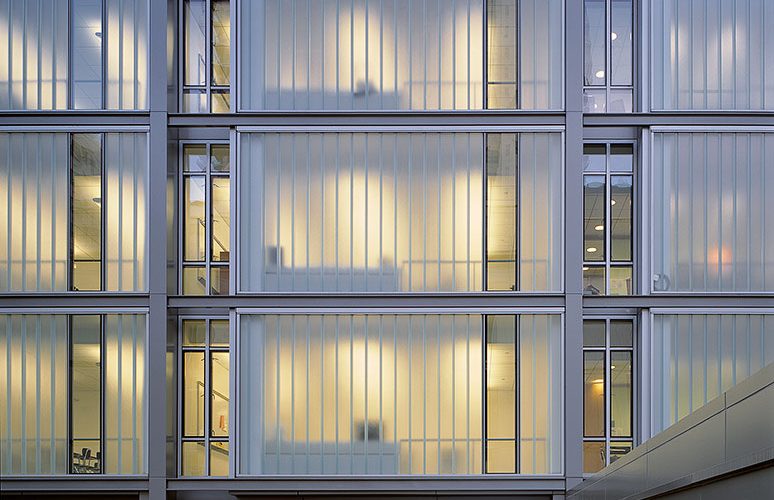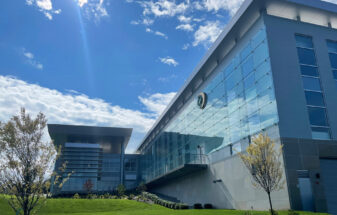Lycée Francais Campus Showcases Bendheim’s Channel Glass
This editorial content was originally published in Architectural Record, March 2004 edition.
The French school made the difficult decision to leave its beautiful (but cramped) Beaux Arts town houses, scattered on six sites throughout the East Side, in 1999. Completion of the new quarters in 2003 made Lycée Français the first independent school in Manhattan to build a new facility in decades (like the Lycée, New York’s other schools had for years been adding new buildings as needed in a piecemeal fashion).
With space at a premium, Polshek first pushed areas with no need for natural illumination, like the gymnasiums and auditorium, underground, through extensive excavation.
While the building has quickly suffered the scratches and knocks expected for an edifice serving more than a thousand youngsters, evidence of its success can be found in the top floor art room, where Upper School teacher Tim Riordan works.
Bendheim is one of the world’s foremost resources for specialty architectural glass. Founded in New York City in 1927, the fourth-generation, family-owned company offers a virtually unlimited range of in-stock and custom architectural glass varieties. Bendheim develops, fabricates, and distributes its products worldwide. The company maintains production facilities in New Jersey and an extensive showroom in New York City




